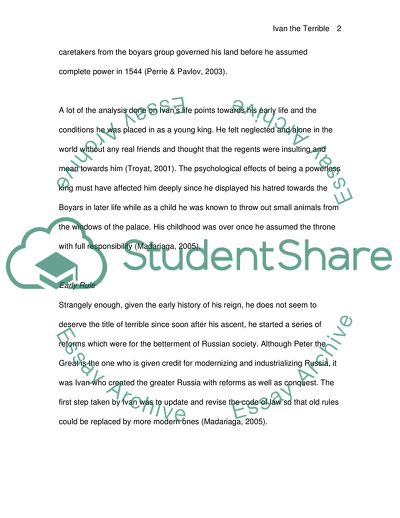Cite this document
(Ivan the Terrible Story Essay Example | Topics and Well Written Essays - 2123 words, n.d.)
Ivan the Terrible Story Essay Example | Topics and Well Written Essays - 2123 words. Retrieved from https://studentshare.org/biographies/1704280-ivan-the-terrible
Ivan the Terrible Story Essay Example | Topics and Well Written Essays - 2123 words. Retrieved from https://studentshare.org/biographies/1704280-ivan-the-terrible
(Ivan the Terrible Story Essay Example | Topics and Well Written Essays - 2123 Words)
Ivan the Terrible Story Essay Example | Topics and Well Written Essays - 2123 Words. https://studentshare.org/biographies/1704280-ivan-the-terrible.
Ivan the Terrible Story Essay Example | Topics and Well Written Essays - 2123 Words. https://studentshare.org/biographies/1704280-ivan-the-terrible.
“Ivan the Terrible Story Essay Example | Topics and Well Written Essays - 2123 Words”, n.d. https://studentshare.org/biographies/1704280-ivan-the-terrible.


